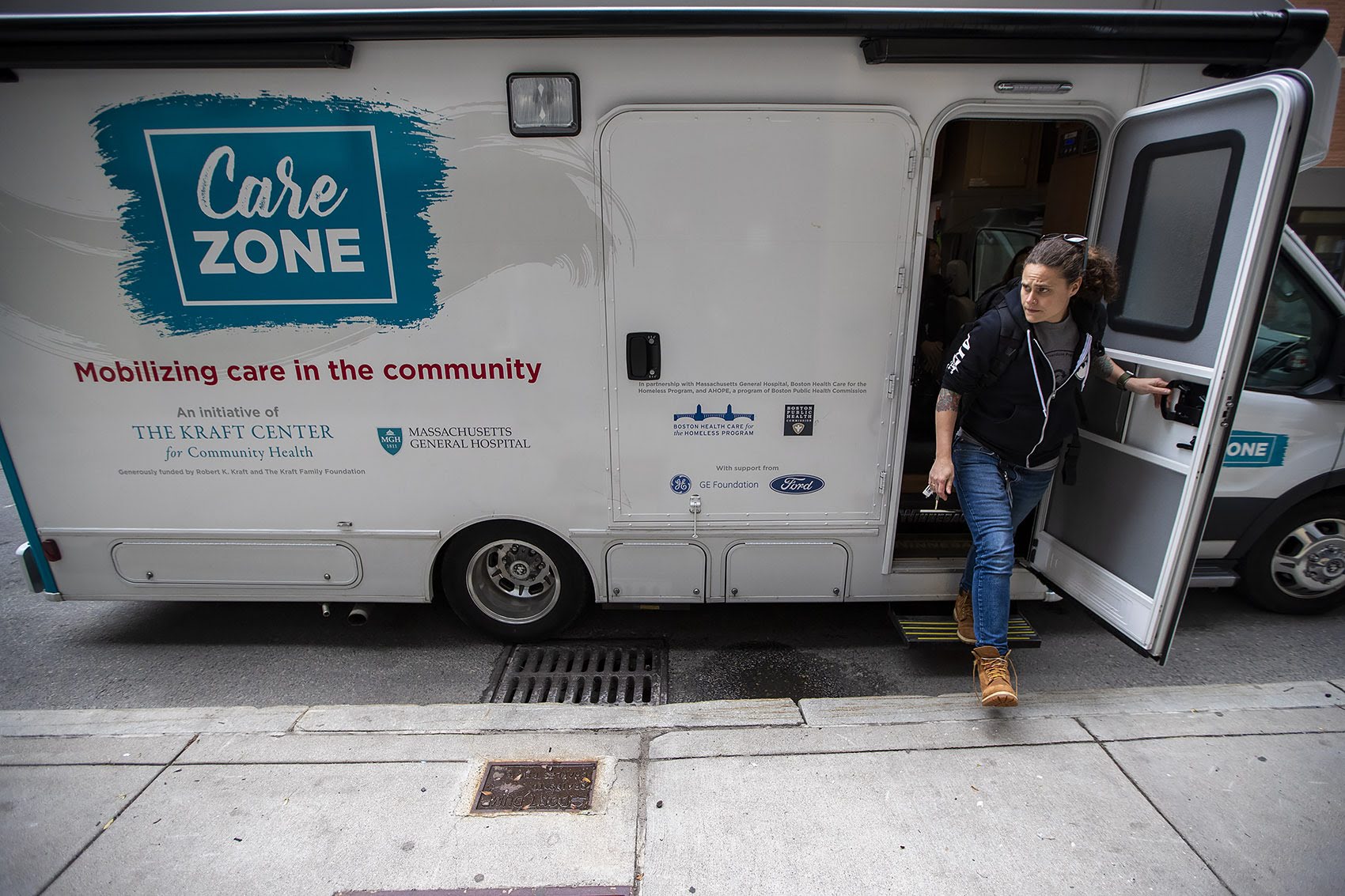The Van Vs. An Opioid Addiction: Taking Treatment To The Streets

Sarah Mackin exits the Care Zone van after it parks on Haverhill St. near by North Station. They will mobilize and walk around the area to look for opioid users who need assistance. Photo by Jesse Costa for WBUR
On the streets of Boston, the potholed path to treatment often starts with a sandwich. Egg salad is the favorite. Today it’s ham. Phil Ribeiro tucks one into the bag of a man who is breathing, but either so sedated or deeply asleep that he’s difficult to rouse.
“Hopefully he doesn’t wake up next to a flock of Norway rats,” says Ribeiro, a public health advocate with AHOPE, the needle exchange program run by the Boston Public Health Commission.
Ribeiro moves on, looking for more ways to spread “a little bit of love” among the dozen or so sleeping bags under a bridge within sight of Boston’s TD Garden.
“Our whole focus is being a bridge to care, a bridge to addiction treatment,” says AHOPE director Sarah Mackin.
That bridge includes a physician and an oversized white van that parks daily in one of four overdose hot spots around Boston. The Care Zone van, funded by the Kraft Center for Community Health at Massachusetts General Hospital, is one of a half dozen or so projects across the country testing models for this theory: If the U.S. wants to end the opioid epidemic, it must make treatment as available as drugs.
